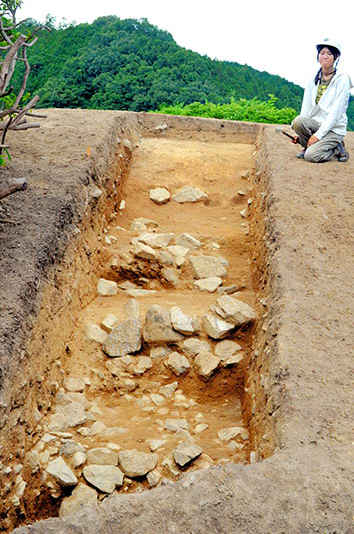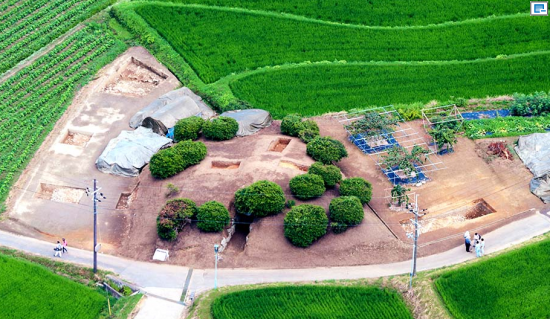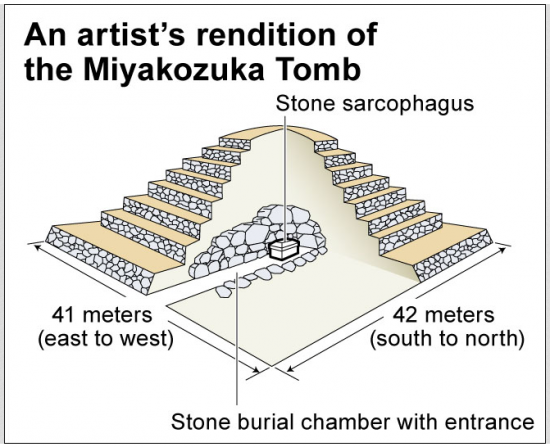Kazuto Tsukamoto
Source - http://ajw.asahi.com/article/behind_news/social_affairs/AJ201408140069

Part of the step pyramid structure of the Miyakozuka Tomb in Asuka, Nara Prefecture, on Aug. 5 (Kazuto Tsukamoto)
Researchers determined that an ancient burial mound here is shaped like a step pyramid, the first such discovery in Japan.
The Miyakozuka Tomb is believed to date from the latter half of the sixth century. The square-shaped tumulus is built of stones in stepped levels like stairs.

The Miyakozuka Tomb in Asuka, Nara Prefecture, as seen from a helicopter on Aug. 5 (Masaki Yamamoto)
Experts from the Asuka village board of education and Kansai University said the site, whose scale is comparable to the burial grounds of emperors, was likely constructed for a powerful member of the Soga clan.
One likely contender is Soga no Iname (?-570), a statesman who married his daughters to an emperor. He also derived tremendous power from his control of immigrants from China and the Korean Peninsula who brought cultural and technological advances with them to Japan.
At its base, the square-shaped tumulus measures 41 meters from east to west and 42 meters from south to north. It rises more than 4.5 meters high.
When researchers with Kansai University investigated the Miyakozuka Tomb in 1967, they noted that it was probably square- or circle-shaped.

They have determined that it has more than five stepped levels, each of which is 30 to 60 centimeters high and roughly one meter wide. The steps are made of stones packed with soil.
Experts say the structure is similar to those found in the ancient kingdom of Koguryo, which held sway over northeastern China and the northern part of the Korean Peninsula.
Soga no Iname established the basis of the Soga clan's prosperity.
The area around the Miyakozuka Tomb is said to be one of the strongholds of the Soga clan. The Ishibutai Tomb, which was constructed in the first half of the seventh century, could be the burial site of Soga's son, Umako.
“I have never seen such a unique square tomb like this (Miyakozuka Tomb) in Japan. It is undoubtedly the resting place of an influential person of the Soga clan,” said Taichiro Shiraishi, director of the Osaka prefectural Chikatsu Asuka Museum.